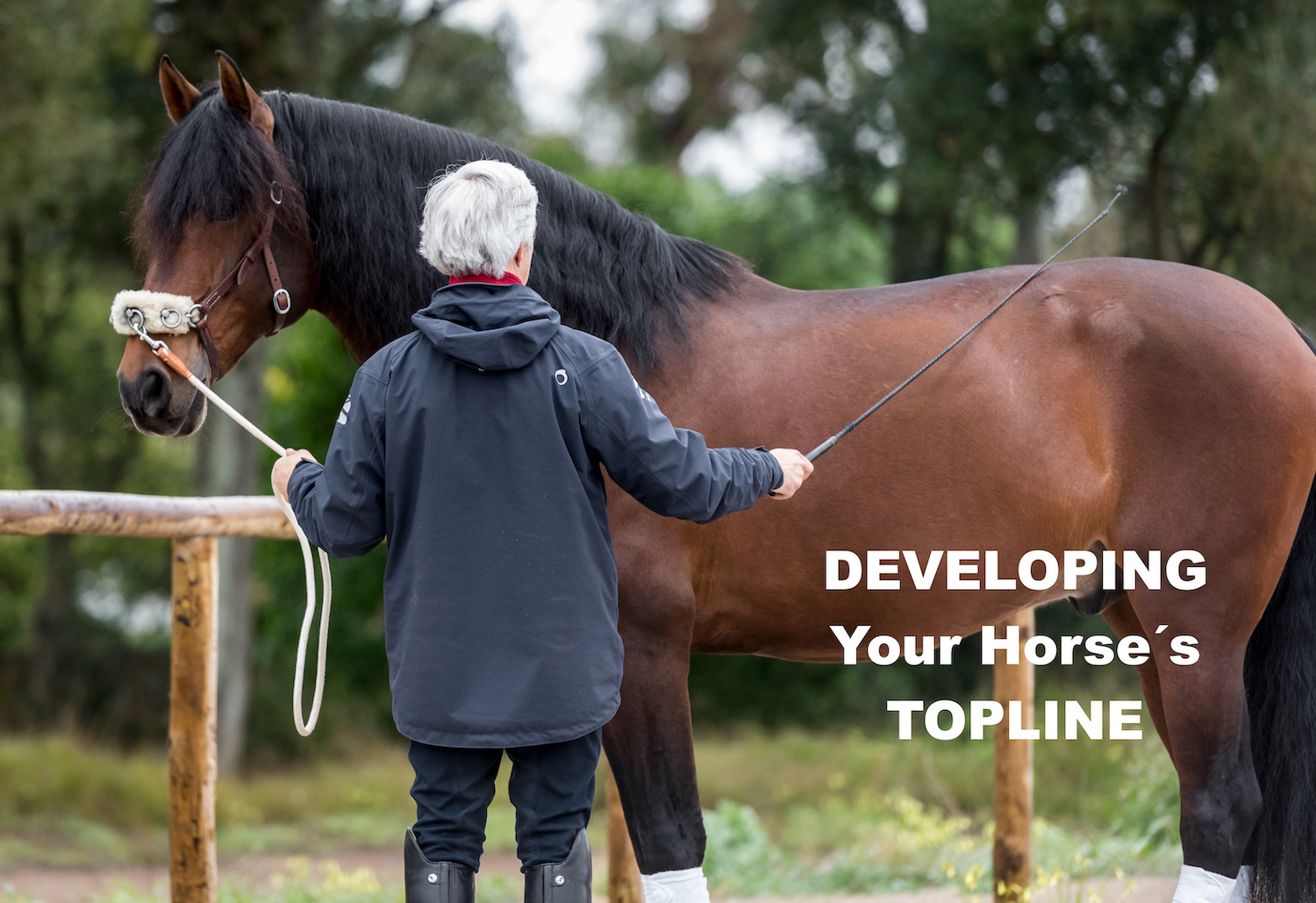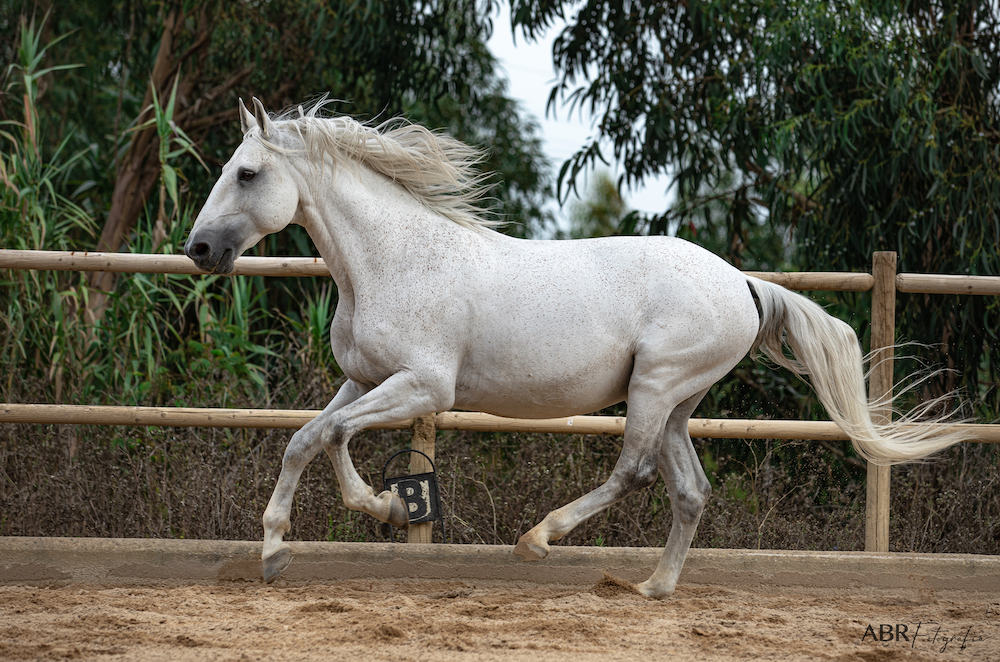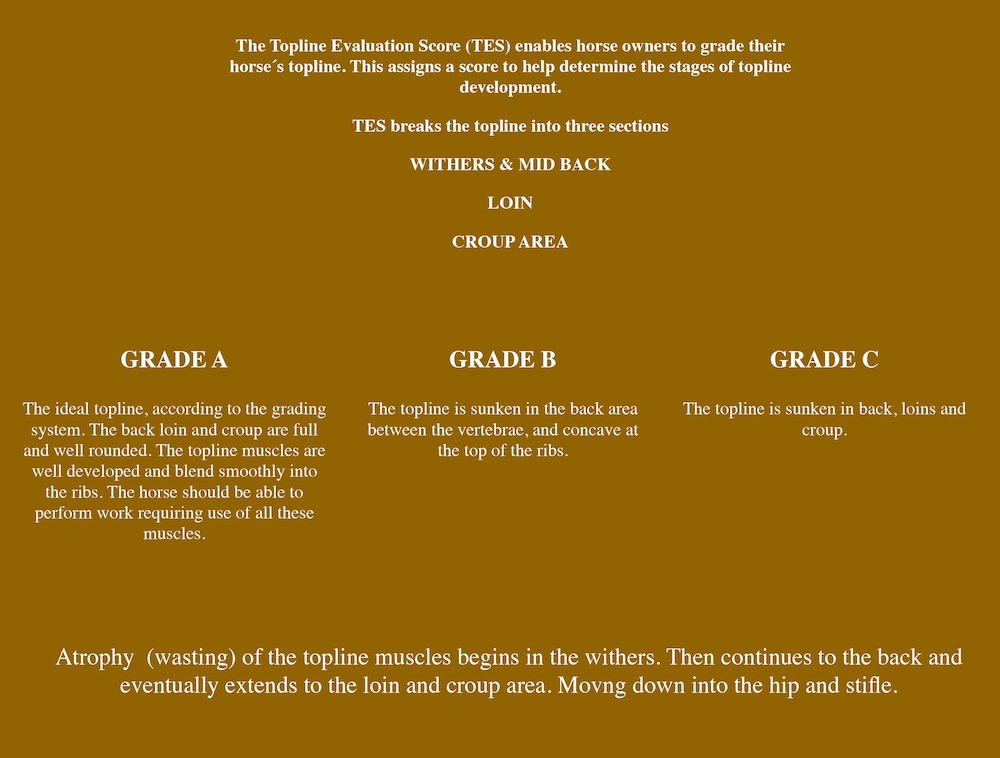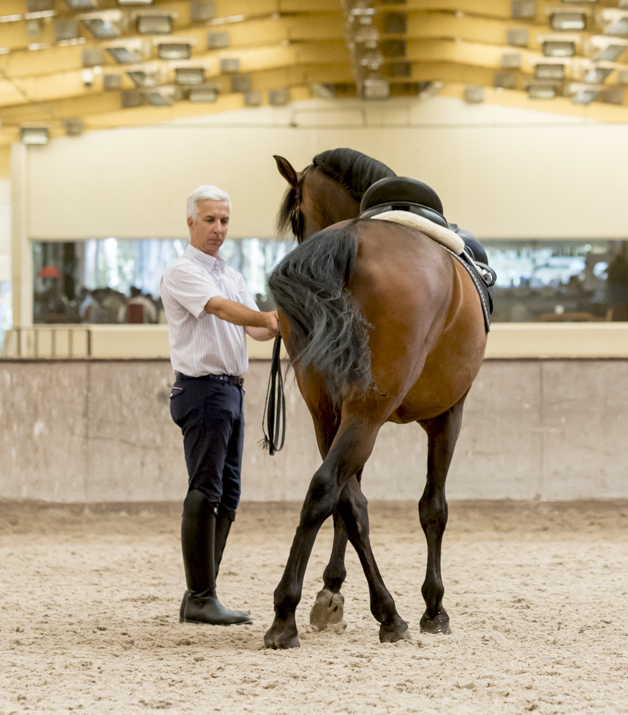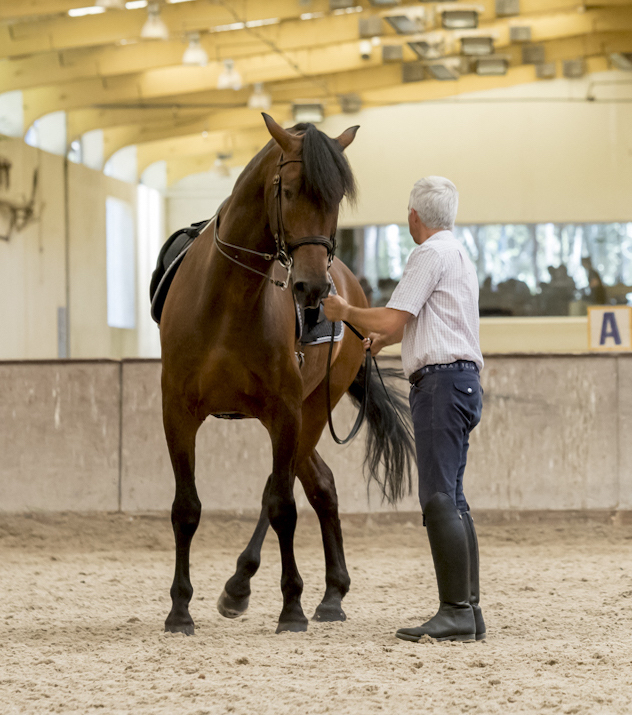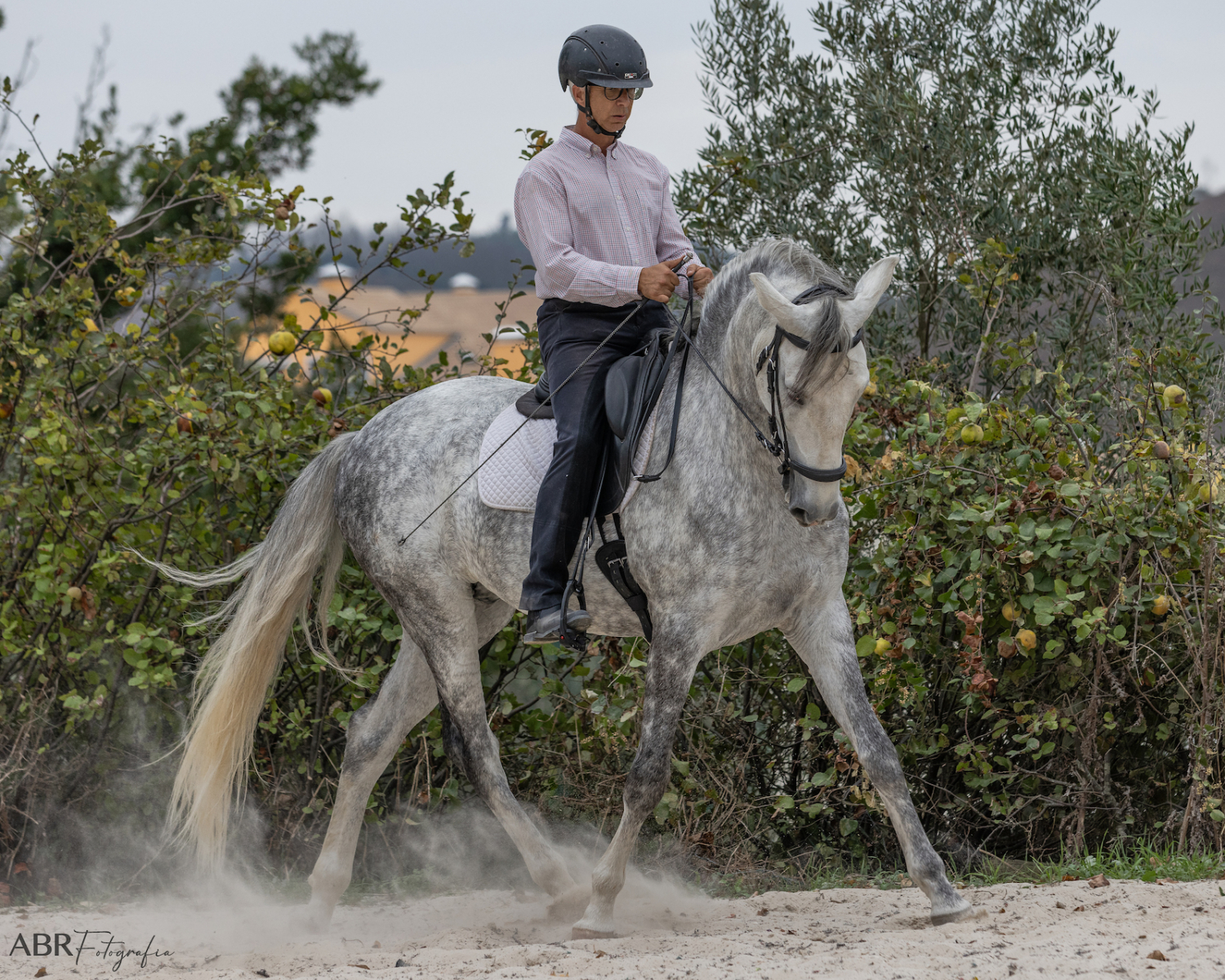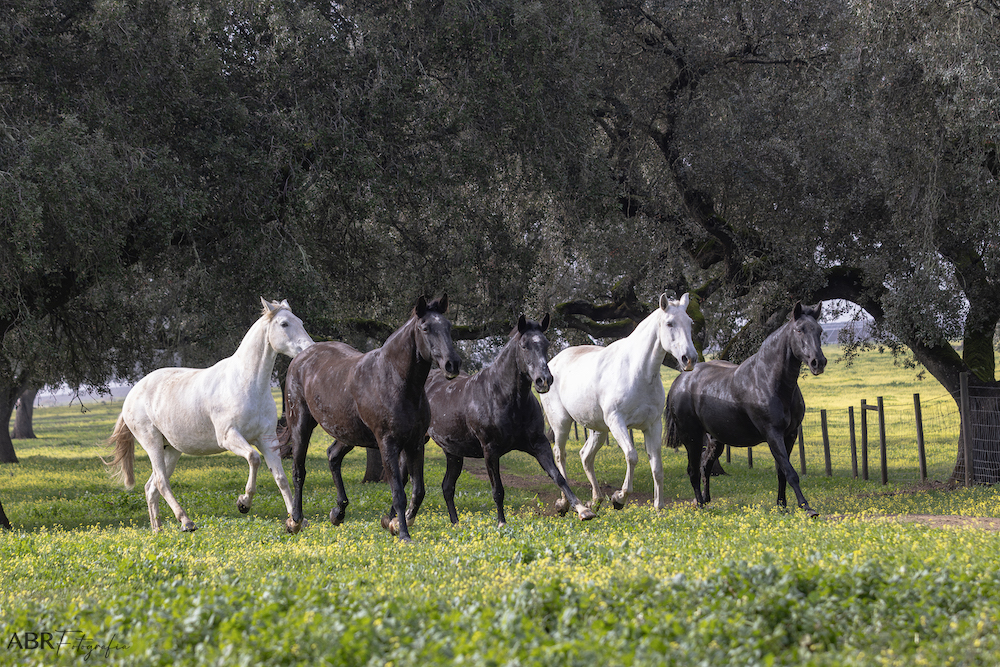By Nuno Cavaco & Teresa Burton
All About The Topline of a Horse
First and Foremost – What is a TOPLINE!
Topline is the term used to describe –
the muscle groups that run along a horse’s spine and stretches along the vertebral column (spine) from the top of the horse´s neck through the wither area, down the back and loin, and over the top of the hip into the croup region and hindquarters.
The main muscle formation in the topline consists of –
The rhomboideus, splenius, trapezius, longissimus dorsi and gluteal muscles. These muscles enable the horse to collect and extend the neck, lift the shoulder and forehand, flex the back and engage the hind legs.
It is important when assessing your horse that you know the difference between fat and muscle especially in the neck area. To understand the difference you can consider using methods to carry out body fat scoring.
A common myth is that fat can be turned to muscle, however this is unfortunately not the case.
The only way to build muscle is through an appropriate exercise regime & by providing quality protein rich dietary support together; neither method will work alone.
WHAT CAN CAUSE POOR TOPLINE OR TOPLINE PROBLEMS
Your first step when assessing your horse´s condition and topline status is to take into account the whole picture – how he currently looks, his lifestyle, diet, age and training regine.
If your horse is lacking muscle in the withers, back, loin or croup, then some development is needed.
Poor topline muscling can be caused by a number of factors- such as:
- Poor nutrition
- Old age
- Young horses who have not yet fully developed or finished growing
- Lack of movement or turnout
- Lameness
- Poor shoeing and hoof care
- Incorrect saddle fit
- Teeth not managed
- Incorrect way of going
- Musculoskeletal issues such as polysaccharide storage myopathy (PSSM)
- Medical issues (e.g. Cushing’s disease, )
It is important when working with your horse to build his topline that you take a holistic approach – it´s all about the whole horse!
Don’t be tempted to divide your horse into parts, as this generally results in over development in some areas and under development in others. You will find it far more effective to work slowly, precisely and gently. Teaching your horse self carriage and balance during in hand, lunging and ridden work. You are activating him from the back through to the front with keen precision in each exercise, use lots of transitions and lateral work; aim to develop dynamic activity without him racing forward. It is more about him lifting up through the belly which stretches the withers, back, loin right through to the crop area.
We need to create back movers not leg movers, when the horse swings all through the body he becomes supple and athletic, when he is just moving his legs he will become stiff un-supple, his movement flat not dynamic and more than likely he will eventually become unwilling to go forward.
Nuno says building a topline is a daily job, regular gentle work is much more effective than irregular work that is too strong leaving your horse stiff and with painful muscles the following day. Focus on gradually building up, varying the work to keep it enjoyable and interesting.
A horse who works six times a week without ever needing to engage his back will show less topline muscle than a horse who works three times in a week correctly.
Developing muscles with the young horse starts with the goal to get them to stretch their frame on the lunge. The aim is for them to stay long and low, the head and neck never coming above the horizontal line. They learn to maintain a steady regular rhythm, balance and activity up and down through transitions on both reins. The purpose is to gradually go from long and low to collected later in his development.
In Hand Work -Why use lateral work in hand to build the top-line ?
When considering topline lateral work has huge benefits. By training your horse to move laterally you are teaching him greater levels of balance – as lateral is not a natural movement for them.
In learning to re balance themselves they work their muscles differently thus the muscles become more supple and athletic. They stretch both sides of their body and their upper line.
If you are new to in hand work We highly recommend our series of Ín Hand´ Articles which take you right from getting started right up to advanced dressage exercises.
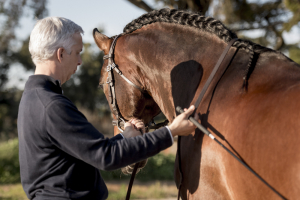
Nuno with Acarus
This shows Acarus´s neck line from withers and head position. Nuno is asking him the gently accept the bit while maintaining a vertical line in the front of the head. Nuno´s aim is to improve the contact without a rider.
Nuno is taking a moment to assess Acarus´s total outline how he is holding himself, how he is accepting a light contact, slight inside bend, his muscles and frame also his acceptance to Nuno as his leader.
Photo Nuno with Acarus
In this image Nuno is working Acarus in ´shoulder in´ on the long side of the arena. You can see in the image that Acarus is stretching all of the outside of his body whilst lifting and contracting the inside. As his inside hind leg passes under him he lifts his belly upward which stretches the upper line and strengthening his belly muscles. Maintaining a flowing and supple movement is vital to achieve the best results.
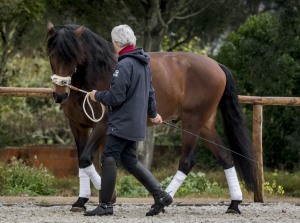
Below, Nuno is working Acarus in quarters out. He is maintaining an inside and outside light rein contact with Acarus in order to control his balance, forwardness, suppleness and sideways movement.
Acarus is stretching his outside and contracting the inside in the way same as in shoulder in, however the hind leg cross under is deeper and the croup stretches further. This exercise is more advanced, the horse is developing greater suppleness. When your young horse is performing this well he is more ready to be ridden.

